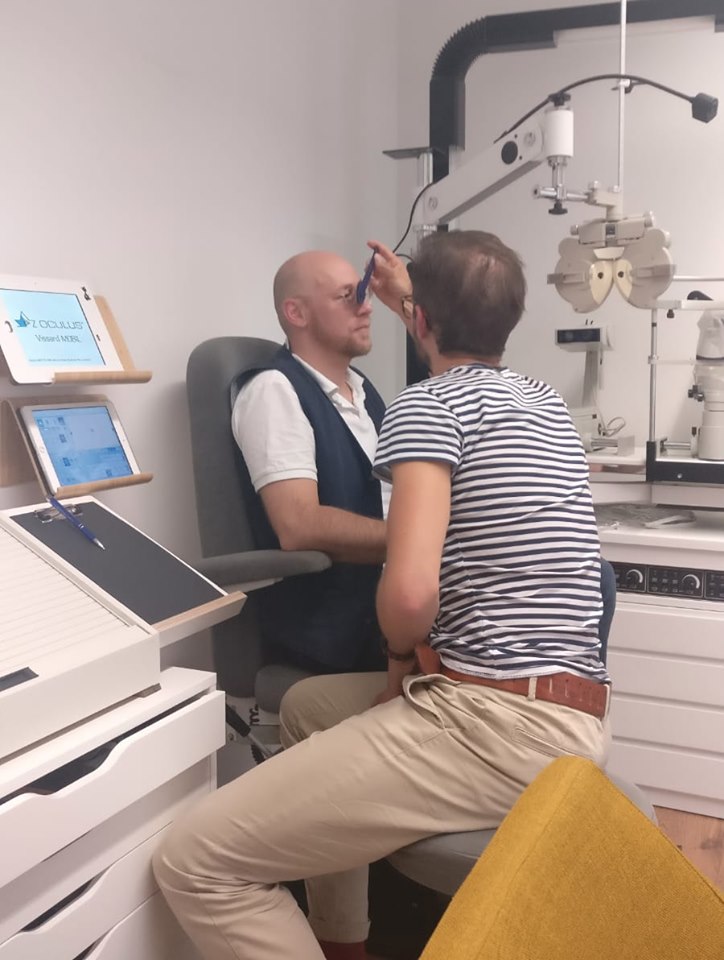I’m still following the dream of a super-lightweight non-environmentally shitty, shippable by envelope headset design based on Google Cardboard. The other approaches to google cardboard that I’ve seen rely on glue or really lame tabs. It’s not stable enough to support a camera without using very thick card, and it makes self assembly irritating. After…
Exporting multiple layers in Inkscape – streamlining the headset design
Until now I had a very heavyweight process for specifying the headset for eyeskills, using OpenScad and lots of geometry. Now that I’m gradually working my way back into the project with new ideas and some fresh motivation, I want to streamline this dramatically so I don’t get bogged down in tool chain hell again.…
Ho Ho Ho. Oh.
I had a plan. I wanted to get the original EyeSkills Community edition back up and running for Christmas. I wanted to integrate the changes I’d been making over the last months. Working on the software really isn’t a priority at the moment (getting the eye tracking hardware ready is more important, without which we’re…
Affordable EyeTracking – working towards a new camera PCB
We keep coming back to the basic fact that we need to know what the eyeballs are doing. This requires an eye tracker which does what we want (particularly, with a software API which doesn’t assume both eyes are coordinating in the usual way!) at a price we can afford. The corollary to this is…
Going back in time
This is a quick mental note : What would an anaglyphic app look like with a “randomised” and continually changing assignment of colour to each eye – or within a VR setting? Would this stop people “cheating” by blinking to assemble a complete image of what’s happening? Perhaps Use PerlinNoise to generate a dynamic texture…
Data Provenance
It really matters that we know exactly what system setup generated any data we collect – the idea being that experiments can be re-run (and thus independently verified) in precisely the same technical context as the originals. To achieve this we store the following information underneath anything else captured by a researcher: You might notice…
Plotter friendly design
OpenSCAD (and my use of the wrong primitives for the dashed lines) didn’t do a great job converting lines and text in the original EyeTracktive Core design, into a format that works well for a plotter pen marking out the headset. I just tried to manually create a better overlay in Inkscape (as a stop-gap)…
When Unity UI Goes bad – The perils of DontDestroyOnLoad
This is quick note about a really obscure problem which can bite you quite hard in unity. If you switch between scene you may need to use DontDestroyOnLoad to keep certain objects hanging around during and after the transition. If, however, you have stored collections of scripts under empty game objects – and there should…
Lets laser cut some headsets!
Over at eyetracktive.org you can see the results of some early experiments in creating the world’s most affordable eye tracking headset. The idea is to make this compatible with off the shelf google cardboard headsets. One constantly underestimated problem, however, is that people have quite differently shaped heads, and eye positions. I find it obnoxious…
An afternoon with Marco Schätzing

Hello there, Lukas here. I am a new member of eyeskills and today I decided to put out my first facebook post! Ben and I had the great chance to meet Marco Schätzing in his natural habitat. He is a studied optometrist and works as a visual trainer. Today, Marco showed us the “Maddox Test”…
